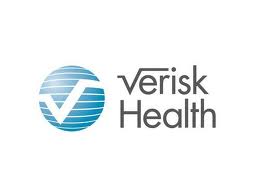Recently Released 2014 Star Ratings Highlight Opportunities for Improvement
Recently Released 2014 Star Ratings Highlight Opportunities for Improvement
Medicare recently released Star ratings for 2014 Part C and Part D for more than 650 Medicare Advantage Part D (MAPD), Medicare Advantage Only (MA-only) and Prescription Drug Plan (PDP) contracts, an increase of nearly 100 contracts over 2013. While more plans are participating, achieving the coveted 5 Star rating remains a challenge.
So, how did they perform?
• 19 received a 5 Star rating for their overall, part C or part D summary scores; the same number of contracts as 2013
• 39 contracts received a low performing icon, a 33% increase from 2013.
For MAPD contracts:
• Approximately 24% received an overall summary rating of 4 stars or above; that’s a 1% increase from 2013
• 38% received a summary rating of 3-3.5; that’s a decrease as 46% received a 3-3.5 Star summary rating in 2013
• Less than 3% received a summary rating of less than 3; 11% received less than 3 in 2013
• 35% of contracts did not enough have data available or were too new to be measured; it was 20% in 2013
Overall, there was slight movement of contracts into the 4 Star plus ratings and reduction in the number of contracts with a rating less than 3. The biggest opportunity for improvement under Star ratings appears to be plans that didn’t have enough data to report or were too new to be measured. This group of contracts grew 15% this past year, with new plans accounting for approximately 26% of the growth. As new and smaller plans grow membership, they need to ensure they have resources and processes in place that support them in their goal of improving quality and services to Medicare beneficiaries while maximizing revenue. The best way to do this is by shoring up data collection and analysis efforts either internally, or with the help of an external partner.
Collection and analysis of data is often an issue with plans that run into internal resource limitations
Internal analysis and maintenance of dashboards is resource intensive. Plans often find they lack the team needed to create and maintain dashboards that ultimately determine the root cause of issues and support the development of action plans needed to address these issues. Predictive modeling capabilities to forecast future ratings is either unavailable or falls by the wayside because plans don’t have staff resources or internal expertise to focus on future ratings.
In short, plans often lack the capacity to do any forecasting for the financial reimbursement or star ratings. Right now, many are “winging it” to project future Star ratings and associated reimbursement.
Additionally, issues with data capture impacts ratings, as well as provider and member engagement. Lack of or limited engagement with providers and members can negatively impact improvement efforts for HEDIS, CAHPS, HOS and Pharmacy measures.
Improving the Quality of Care
It is clear that there is room for improvement when it comes to quality. Approximately 45% of plans received ratings between 3-3.5 Stars. And, plans that were rated between 3-3.5 Stars appear to be moving into the 4+ Star ratings range, with an approximate 3% increase within the category of 4+ Star rated plans.
As you know, HEDIS is a big component of Star ratings. By providing clients with their near real-time performance, data vendors can help plans identify HEDIS and other opportunities that will impact their Star ratings. This is truly the best way for clients to impact HEDIS measures under Star ratings. Plans historically ran their HEDIS rates once a year; now, plans are beginning to do HEDIS runs as frequently as monthly—and in real-time—so they can proactively identify members who may be part of the following year HEDIS population and ensure they address gaps in care.
Engaging members and providers in HEDIS improvement initiatives is critical. Providers can reinforce health plan messaging to members about the importance of staying up to date on recommended care and closing care gaps, as well as help members access care and services available through the health plan.
Below are a few best practices that plans can implement to increase Star rating measures:
• CAHPS Measures: Show members that you care about them and are trying to improve both the access to and quality of healthcare
• HOS Measures: Ensure that members understand their benefits and the resources available to them so they can maximize their health. Let members know you’re listening to them, and working to identify and resolve issues.
• Medication Adherence Measures: Identify medications that members are on and proactively provide outreach to ensure members understand and are taking their medication as prescribed, including high-risk medications.
For a complete list of Five Star Ratings results, click here. To contact an expert with Star or HEDIS questions, click here.

